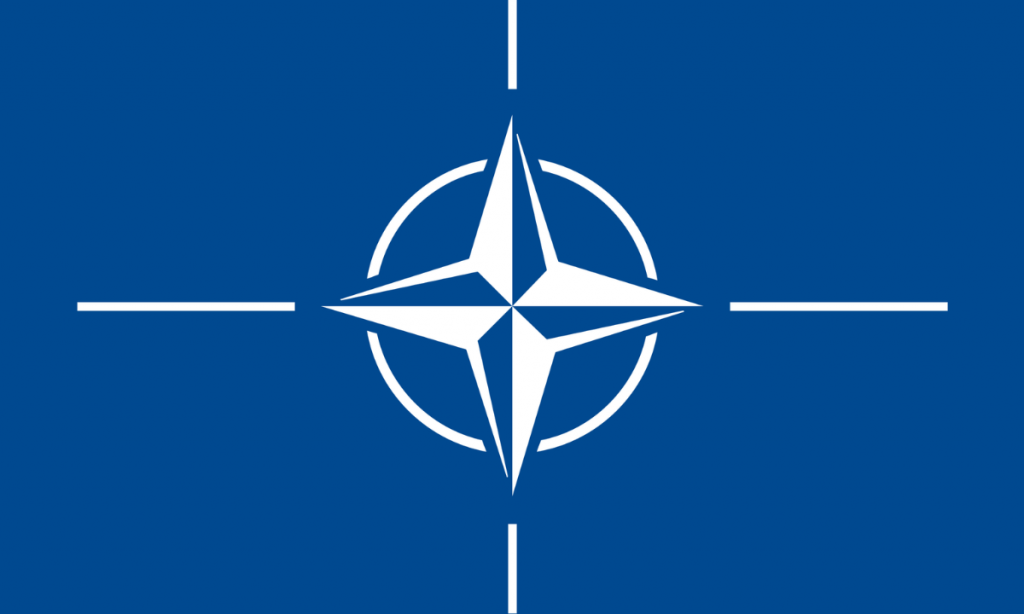Since its formation over 75 years ago, the North Atlantic Treaty Organization (NATO) has weathered challenging political realities across decades of varied U.S. administrations and transatlantic tensions, defying predictions of its collapse. Amid growing defense budgets, renewed global conflicts, and shifting U.S. rhetoric toward the alliance, questions surrounding NATO’s durability and America’s long-term commitment to collective defense are again at the forefront of international law and diplomacy.
Vanderbilt Law’s International Legal Studies Program hosted Steven Hill to discuss how U.S. commitments to NATO may evolve under a second Donald Trump presidency, examining the legal and diplomatic implications for the alliance and what it means for the future of transatlantic security. Hill serves as Executive Secretary of the International Institute for Justice and the Rule of Law. His previous roles include Director for Global Criminal Justice and Multilateral Affairs at the White House National Security Council, chief legal advisor to the NATO Secretary General in Brussels, and Counselor for Legal Affairs at the U.S. Mission to the United Nations.
Hill described NATO—established in 1949 and now comprising 32 member states—as “the alliance that people have been saying is going to fail literally since the day it started.”
The legal architecture of the North Atlantic Treaty forms the foundation of NATO’s resilience, Hill explained. The treaty’s brevity, just 14 concise articles in total, has also been key to its endurance. He outlined how key provisions—particularly Articles 1, 3, 4, and 5—strike a balance between legal clarity and political flexibility, enabling the alliance to “bend without breaking” through various conflicts over time, from the fall of the Berlin Wall and the Bosnian War to 9/11, Russia’s invasion of Crimea, and the ongoing war in Ukraine.
Article 1 establishes NATO’s link to the United Nations Charter, a clause Hill called “the legitimacy piece” of the treaty. The provision “stands for the idea that NATO, even if it’s a smaller subset of the international community, is plugging into a bigger enforcement system,” requiring actions by member states to remain consistent with Security Council mandates. By anchoring NATO within the UN system, the treaty ensures that the alliance remains lawful and credible by global governance and peace standards.
Provisions such as Article 3’s self-help and mutual aid framework—which Hill described as the “resilience clause”—and Article 4’s consultation framework have gained renewed relevance and utilization as member states respond to evolving security threats, from cyberattacks to drone incursions. Lastly, Article 5, often summarized as “an attack on one is an attack on all,” leaves room for members to act as they deem necessary to sustain North Atlantic security. This built-in adaptability has allowed the alliance to continuously adjust to emerging security challenges without collapsing, Hill argued.
The U.S.’s legislative and political investment in NATO make withdrawal highly improbable. Despite the clarity of the North Atlantic Treaty, the intersection of its provisions with the U.S. Constitution remains ambiguous, raising the unresolved question of whether a president can unilaterally withdraw the U.S. from NATO. While Article 13 of the treaty allows any member to leave the alliance with one year’s notice, the U.S. Constitution offers no explicit guidance on who holds that authority. “There’s a long running debate,” Hill noted, over whether the president can terminate treaties without congressional approval. He pointed to Goldwater v. Carter—a 1979 Supreme Court case challenging President Jimmy Carter’s decision to withdraw from a defense treaty with Taiwan—as an example of this historical constitutional ambiguity.
Congress later passed the NATO Support Act of 2019, which prohibits the use of federal funds to withdraw from the alliance and reaffirms bipartisan commitment to collective defense. But Hill cautioned that a unilateral attempt could still provoke a constitutional showdown, likely reaching the Supreme Court. He still predicts that the U.S.’ legal and institutional entrenchment in NATO makes a withdrawal unlikely, despite recurring political rhetoric questioning the alliance’s value.
Even amid turbulent political discourse, NATO’s trajectory is moving toward long-term commitment—increased spending, greater resilience, and deeper collective defense. Recent developments include Finland and Sweden’s accession, a renewed focus on Article 3, and member states’ plan to raise defense spending targets from two percent of GDP to as high as five percent by 2035. These investments signal what Hill described as a “defense industrial surge” poised to reshape transatlantic procurement, contracting, and dispute resolution.
Modern threats complicate traditional legal thresholds for “armed attack” and proportional response, requiring continuous coordination between member states, militaries, and international lawyers.
Hill emphasized that NATO’s endurance is grounded as much in law as in diplomacy, a balance that has preserved the alliance for 75 years. He predicts that NATO’s legal framework will continue to adapt to emerging domains, including the use of artificial intelligence in defense operations. “NATO’s politics are loud and noisy and very controversial,” he remarked, “but the law itself is quiet.”
